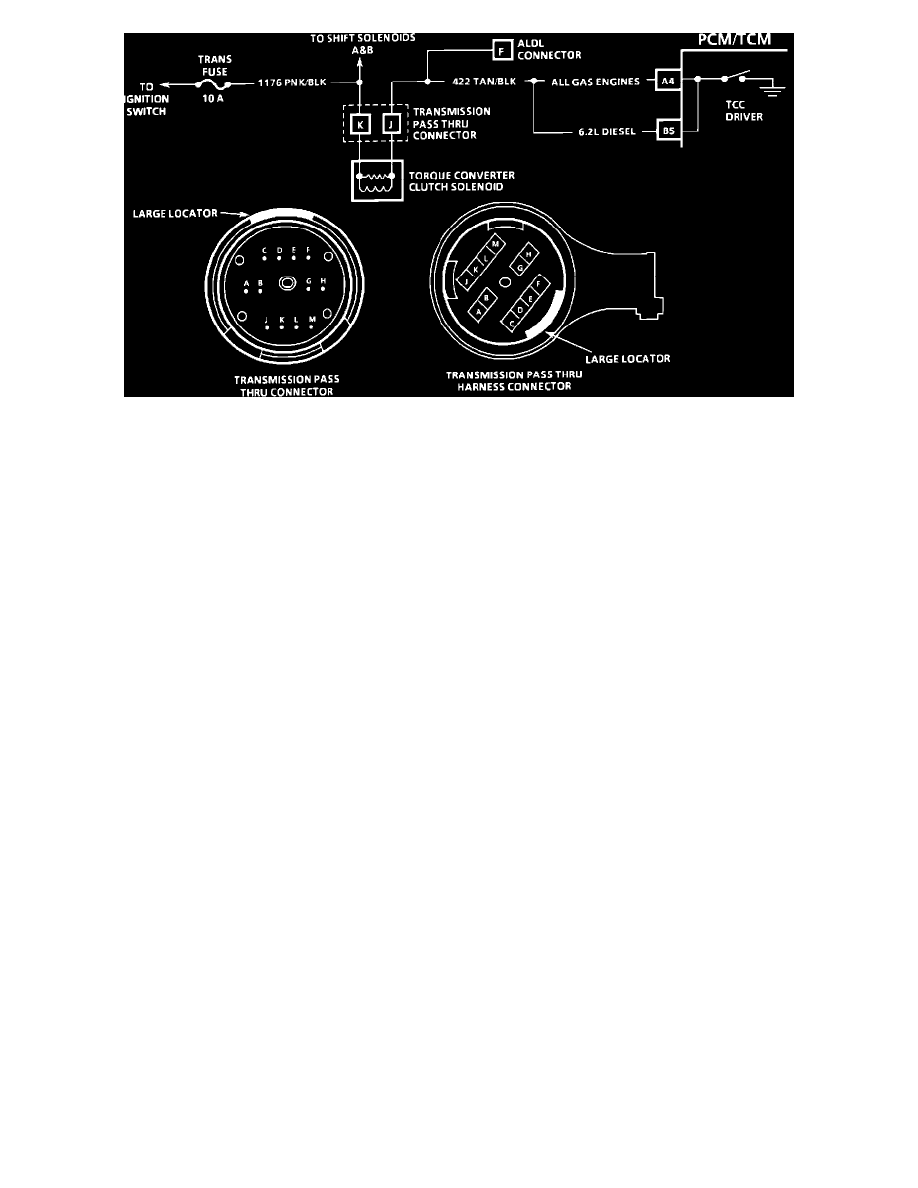C 2500 Truck 2WD V6-262 4.3L VIN Z (1992)

Torque Converter Clutch Circuit
Circuit Description:
The purpose of the Torque Converter Clutch (TCC) is to eliminate the power loss of the torque converter stage when the vehicle is in a cruise
condition. This allows the convenience of the automatic transmission and the fuel economy of a manual transmission.
Switched battery voltage is supplied to the TCC solenoid which is located on the valve body. When the PCM/TCM closes the TCC driver, the
solenoid will activate a valve within the valve body. Pressure will then be applied to the torque converter clutch. The PCM/TCM will continue to
open and close the TCC driver very rapidly to modulated pressure.
TCC will engage when:
-
Vehicle speed is above 30 mph (48 km/h).
-
Engine at normal operating temperature (above 65°C) (149°F).
-
Transmission at normal operating temperature 95°C (195°F).
-
Throttle position sensor output not changing, indicating a steady road speed.
-
Brake switch closed.
-
4th gear.
-
No codes stored.
Test Description:
Number(s) below refer to circled number(s) on the diagnostic chart.
1. The first portion of the test checks for a shorted, internal transmission harness or TCC solenoid.
2. The second part of the test verifies power supply to the TCC solenoid.
3. This step checks CKT 422 for a short to ground.
4. The final step checks the PCM/TCM ability to control the TCC solenoid.
Diagnostic Aids:
Be sure to check all connections especially those at the transmission pass-thru connector.
If they are OK, See: Computers and Control Systems/Testing and Inspection/Symptom Related Diagnostic Procedures/Intermittent Condition
The TCC solenoid is pulse width modulated and designed to keep the TCC right at the point of engagement. Therefore, some slight slip is normal.
